TESS To Begin Search for Habitable Planets After SpaceX Launch on April 16 2018
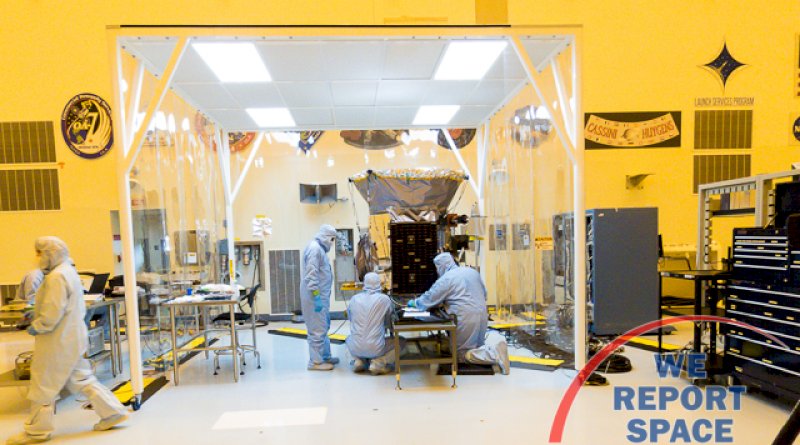
KENNEDY SPACE CENTER: Dr. George Ricker from Massachusetts Institute of Technology hosted a media day today for the Transiting Exoplanet Survey Satellite (TESS). The principal investigator explained TESS's role between the Kepler Space Telescope (Kepler) and the James Webb Space Telescope (Webb).
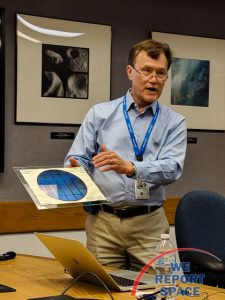
TESS will be launching on a SpaceX Falcon 9 from Cape Canaveral Air Force Station Space Launch Complex 40 in April. The satellite is designed to look for exoplanets that might be suitable for life. While Kepler looked at one small area of the sky, TESS is designed to look in all directions. After launch, TESS will use a lunar assist and three burns to position itself in a 14-day orbit around the Earth. The orbit will bring TESS close to Earth but then out beyond the orbit of the Moon and back.
Trying to Detect a Planet Transiting in Front of a Distant Star
Backyard astronomers might have tried to capture a few frames of the planet Mercury passing in front of the sun. TESS is trying to do the same thing - looking at distant stars to detect a planet transiting in front of the star. TESS is equipped with four cameras, each with an array of four 20-inch CCD camera receptors that were custom designed for the project. TESS can detect stars 1 million times fainter than you can see with the naked eye.
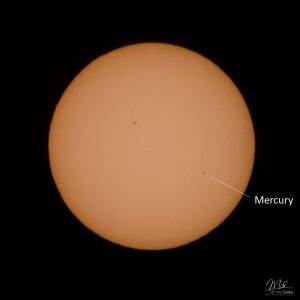
Ricker: "A transit is a geometric condition where the orbital plane of a planet happens to align with the line of sight of TESS. As the planet moves around the star, the planet casts a shadow that will appear for a while and then disappear. You can look at the transit depth - the actual amplitude and calculate the size of the planet as a ratio of the star. With that information, if you can determine a mass, then you have a density. That will tell you if the planet that you are looking at happens to be a water world or like the Earth."
TESS's Orbit Will Allow It To Orbit for Decades
TESS will use a novel high Earth orbit called a Resonance Orbit. TESS will orbit the Earth every 13.7 days. The interplay between the Moon and TESS will allow TESS to stay stable without using propellant for station keeping for decades. Ricker: "You won't have to have thrusters. It is a very elegant solution to this problem." While TESS is scheduled to operate for two years, it will be orbiting for much longer. The life of TESS will likely be from failing electronics instead of decaying orbit.
Tess will collect data from the four cameras from each pass and then transmit that data on each orbit as TESS approaches close to Earth. It will take 2-4 hours to download data from that 14-day orbit. That data will be processed by NASA Ames Research Center, using algorithms developed during the Kepler project. It should take a month to process the data from one orbit. Ricker expects to find new planets from TESS within a few months of launch.
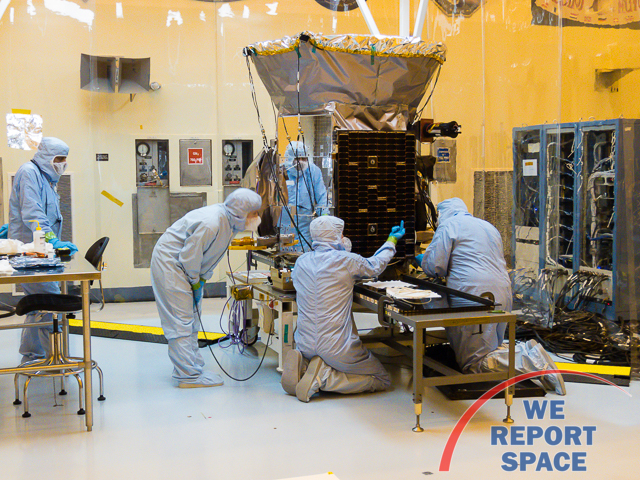
How Does TESS Fit Between Kepler and Webb?
Deputy Project Manager for Resources answered questions about the role of TESS: "TESS is a follow-on to Kepler in many ways. Kepler answered the question, 'Statistically, how many planets are out there?' It picked to look at one spot in the night sky and did that long stare, just to say, OK, are there a lit bit of planets or are there many planets? And the answer was 'Many'. Kepler found over 3000 planets around other stars. That answered the statistical question: Most stars in the night sky likely have a planet orbiting around them. But TESS is the survey approach, where you are looking in, closer and all around, trying to find planets that are easier for us to follow up on. As a star is brighter and closer to the Earth, it is easier for us to use big ground telescopes to analyze their atmospheres. That's where this data is ultimately going. We can use assets that we already have to dig in and find out if the atmosphere of that planet is nice like oxygen like we have here or if it something terrible that you absolutely could not support any life on. That's the goal of the TESS data."
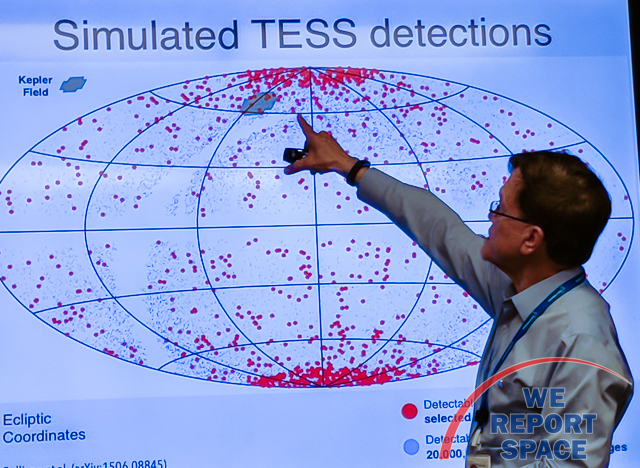
"We have James Webb coming next. We will be able to send our data to Webb for the areas where Webb is observing. For James Webb, there is all kinds of science that it is supposed to do besides searching for exoplanets. So, with the TESS data, you can pick out the planet that they would want to focus upon. If you could pick out a planet with our data that you could define as being in the habitable zone of the star - not too hot, not too cold - and you know it is a rocky planet, then you can tell Webb, 'OK here is a candidate that you want to spend your time to observe its atmosphere.'"

Stunning, full color photo book covering every east coast launch spanning 2014-2015, including the first-ever powered landing of a SpaceX Falcon 9 rocket.
More Info



